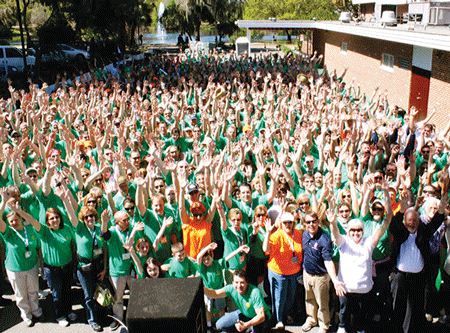Recent Commissioners’ Conference approved group to discuss publishing.
Some years ago, an officer friend related the after-church conversation he and his wife had with their daughters. Like many families, they talked with their children about that day’s Sunday school lesson.
Christie, 4, was first. Try as she might, she couldn’t remember the lesson.
Her sister, Julie, 6, was next. And she remembered. It was the Easter story. She told it as many little girls will do, with every detail—the Palm Sunday trip, the trial, the cross, the body in the tomb, the first Easter morning. Just then, Christie broke in, “Oh, now I remember—when they got to the tomb and looked in, it was empty. That’s what the story was about—it’s empty!”
Of all the millions of words written about history and religion, these two sum up the essence of this miracle: It’s empty. Our Redeemer lives!
Late one morning, we stood at Gordon’s Calvary in Jerusalem. The garden had a unique quietness. In spite of its location, adjacent to the central bus terminal and a road busy with cars, taxicabs and buses, the Garden Tomb maintains a reverent calm.
Crowds of pilgrims from every continent, speaking myriad languages, make their way there. A spirit of solemnity descends even as visitors wait in line. Upon entering, one sees the small room carved out of native limestone. It contains three coffin-like enclosures, carved out of the rock to bury the dead. On one of the openings lies a broken piece of flat marble, like the lid of a grave.
But it’s empty—no coffin, no skeletal remains.
One can see how the tomb fits the Scripture’s accounts, even to the groove carved in front of the door, where the stone would have been rolled. This tomb was designed as a burial place for the wealthy, like Joseph of Arimathea. Today, it is a quiet place, sacred, but empty.
Luke 24 describes the first Easter morning:“Why do you look for the living among the dead? He is not here; he has risen! Remember how he told you, while he was still with you in Galilee: ‘The Son of Man must be delivered into the hands of sinful men, be crucified and on the third day be raised again.’” Then they remembered his words (Luke 24:5b-8 NIV).
Even Jesus referred to his death and resurrection. From that time on Jesus began to explain to his disciples that he must go to Jerusalem and suffer many things at the hands of the elders, chief priests and teachers of the law, and that he must be killed and on the third day be raised to life (Matt. 16:21 NIV).
The story of the resurrection still troubles some people who have had no religious experience. For others the name of Jesus Christ is a swear word. One young man asked me, “Chaplain, now tell me, did a Jesus Christ ever live and how could he die and come back to life again?”
Billy Graham once addressed this following a similar question: “Dear Rev. Graham: I’d like to be a Christian, but I have a hard time believing that Jesus rose from the dead. I’m an intensive-care nurse, and I know that once a person dies, that’s the end. Maybe you can help me get past these doubts?”
Graham answered: “The resurrection of Jesus Christ from the dead is the most important event in all history, and incredible as it may seem, it really did happen. In fact, it might interest you to know that one of the Gospels was written by a medical doctor (Luke). Like you, he knew that death is irreversible, yet he also gave us one of the most extensive accounts of Jesus’ resurrection from the dead. Why? Because he had thoroughly investigated the evidence of the resurrection for himself and he knew only one conclusion was possible; Jesus had come back from the dead.”
Do you believe in Easter? Millions do, including little Christie. As she remembered, the tomb was empty.
Jesus said, “I am the resurrection and the life; he who believes in me will live even if he dies, and everyone who lives and believes in me will never die” (John 11:25-26a).
Do you believe?











